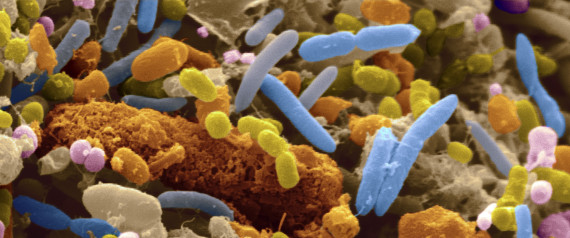
DrAllisonGandre
Posts by :


Have you tried acupuncture yet?
I am constantly referring patients to acupuncture for its many health benefits. Lucky for me, we have 2 amazing practitioners in house.
So, what exactly is Acupuncture?
 From The American Academy of Medical Acupuncture:
From The American Academy of Medical Acupuncture:- promotion of health and well-being,
- prevention of illness,
- treatment of various medical conditions.
While acupuncture is often associated with pain control, in the hands of a well-trained practitioner it has much broader applications. Acupuncture can be effective as the only treatment used, or as the support or adjunct to other medial treatment forms in many medical and surgical disorders.The World Health Organization recognizes the use of acupuncture in the treatment of a wide range of medical problems, including:
- Digestive disorders: gastritis and hyperacidity, spastic colon, constipation, diarrhea.
- Respiratory disorders: sinusitis, sore throat, bronchitis, asthma, recurrent chest infections.
- Neurological and muscular disorders: headaches, facial tics, neck pain, rib neuritis, frozen shoulder, tennis elbow, various forms of tendinitis, low back pain, sciatica, osteoarthritis.
- Urinary, menstrual, and reproductive problems.
Acupuncture is particularly useful in resolving physical problems related to tension andstress and emotional conditions.
- Do not eat an unusually large meal immediately before or after your treatment.
- Do not over-exercise, engage in sexual activity, or consume alcoholic beverages within 6 hours before or after the treatment.
- Plan your activities so that after the treatment you can get some rest, or at least not have to be working at top performance. This is especially important for the first few visits.
- Continue to take any prescription medicines as directed by your regular doctor. Substance abuse (drugs and alcohol) especially in the week prior to treatment, will seriously interfere with the effectiveness of acupuncture reatments.
- Remember to keep good mental or written notes of what your response is to the treatment. This is important for your doctor to know so that the follow-up treatments can be designed to best help you and your problem

Curing Incurable Conditions
I was once told I had an “incurable” painful condition called adenomyosis. It’s a benign, but very painful condition of the uterus. Treatment options included pain meds or surgical removal of the uterus. I was 32 at the time of diagnosis and on the fence about whether I wanted children or not. Lucky for me, I found an acupuncturist who looked me in the eyes and calmly said, “No problem, we can fix this in a few weeks of treatment.” I didn’t really believe her. After one month of a traditional Chinese medicine protocol consisting of daily herbs and bi-weekly acupuncture, my symptoms were gone. On ultrasound imaging, my obGyn declared my condition miraculously cured.
In the last decade of service as a naturopathic doctor, I’ve had the privilege of seeing many so-called “incurable” diseases disappear. Here is a case from this week:
60 year old wife, mother and grandmother came into my office with stage 3b chronic kidney disease, non-alcoholic fatty liver disease, gastric reflux and chronic back pain. She came to me because her doctor told her she would eventually need dialysis and she was scared. She was on pain meds, heartburn meds, a very poor quality vitamin mineral supplement and ate a standard american diet of conventional non-organic foods. I put her on an organic plant-based diet to which she was 80% compliant (she is working towards 100%) and increased her fluid intake. We weaned her off the pain meds and supplemented with high quality anti-inflammatory herbs and nutrients. I put her on a treatment protocol of vitamin C, b-vitamins and glutathione infusions once a week for 4 weeks, then every other week. She is off all medications with no heartburn and no pain. She is walking for exercise. Her labs came back with normal blood sugar, normal liver enzymes, and an improved GFR score that put her in stage 2 instead of 3B. She will not need dialysis. Her other kidney function tests went into normal range.


The Antacid Myth
If you suffer from acid reflux, you might think you have too much stomach acid. Think again. The vast majority of you actually have low stomach acid and your hypochlorhydria (that’s the term for low stomach acid) is likely causing your heart burn. I know, it sounds contradictory. Excessive stomach acid levels are only found in very rare disease cases and I have yet to see one in my clinic. Although antacids work to temporarily relieve symptoms of heartburn, they are not addressing the cause of heartburn. Lowering the stomach acid even further in someone with hypochlorhydria makes the real problem worse and can lead to more complicated health issues like irritable bowel syndrome, GI infections and megaloblastic anemia from low B12 absorption (we need stomach acid to absorb B12). Did you know the original pharmaceutical grade acid blockers came with a warning label saying, “Do not use for more than 14 days”? Today, people stay on these drugs for years, leaving the stomach vulnerable to infection, improper food breakdown and poor nutrient assimilation.
Hypochlorhydria can be caused by stress, inadequate nutrient intake, bacterial infections and food sensitivities. In addition to addressing the actual cause, I treat low stomach acid and heartburn by giving hydrochloric acid and digestive enzymes with food. Yes, you read that correctly. I prescribe you more acid for your acid reflux and it works. (Exception = people with rare tumors that secrete acid or active ulcers). A typical dosage is 2 capsules of HCL with enzymes a few bites into a meal. I also prescribe demulcent herbs and nutrients that soothe and promote healing of the gastric mucosa. So far (knock on wood), I’ve had 100% success rate treating heartburn patients with this protocol. The majority of patients are able to stop using the supplements within 3 months of treatment.
Anyone with long-term heartburn symptoms should be properly worked up to rule out GI ulcers or other GI pathology.


Forest Bathing to Prevent Cancer
Want to Prevent Cancer? Take a Walk in the Forest—Studies on “Forest Bathing”
and reduce risk of heart disease.
Recent scientific studies shows there is—get to a forest and take a walk.
We’ve always known that spending time in nature is good for us, but now we have real evidence that spending time in the forest, specifically, can create measurable changes in our bodies and minds that have a significant effect on our health.
What is Forest Bathing?
The term shinrin-yoki or “forest bathing” was coined by the Japanese Ministry of Agriculture, Forestry, and Fisheries in 1982. It described the process of taking in the atmosphere of the forest to improve mental and physical relaxation. The practice has been popular in Japan for decades, with citizens escaping to one of the many forests to relax and recharge. To them, it’s an experience similar to aromatherapy, as breathing in the unique air of the forest is a key part of the process. According to a 2003 survey, over a quarter of respondents had participated in a forest-bathing trip.
In 2004, Japan established the Association of Therapeutic Effects of Forests. Just three years later, the International Union of Forest Research Organizations (IUFRO) launched a new taskforce on forests and human health in Finland. That same year, the Japanese Society for Hygiene established the Japanese Society of Forest Medicine.
All these associations have made it possible for researchers to conduct scientific tests on the effect of forest bathing on mental and physical health. The results have shown that if you’re not regularly walking in the forest, you should be!
Health Benefits of Forest Bathing
Turns out that taking a walk in the forest does a lot more for you than simply help you relax—thought in our fast-paced world, that’s significant in itself. Here’s more on what this therapy can do for you:
- Boost the immune system: Laboratory studies discovered that “phytoncides”—like a-pinene and limonene, which are essential oils from the wood of forest trees—increase the activity of killer cells, responsible for keeping cancer cells in check and for otherwise preventing infections and illnesses. Other studies have found that fragrance from these oils helps boost killer cell activity. In 2010, researchers took it a step further, and conducted tests on healthy male subjects aged 37-55 who actually took a walk in the forest and then took a similar walk in the city. Both walks were 2.5 km in length and lasted about two hours. Researchers measured phytoncides in the air, took blood samples and had participants complete a survey after the trip. They also took follow-up blood samples on day 7 and day 30 after the walks. Results showed that not only did the forest walk increase activity of natural killer cells (while the city walk did not), but the effects were still there 30 days later. In a second part of the same study, researchers found similar effects on women who engaged in forest walks. This part of the study also showed a decrease in the percentage of “T cells,” which indicate mental stress.
- Relieve stress: In the study mentioned above, researchers measured levels of adrenaline in the urine of both the male and female participants. They found that the forest bathing trips significantly decreased the adrenaline levels, suggesting the participants were under lower stress during their time in the forest. Other studies have found similar results, with forest bathing reducing levels of “cortisol,” the stress hormone, and increasing self-reported vigor, as well as decreasing anxiety, depression, and anger. Measurements of white blood cells also showed that the experience was relaxing for the parasympathetic nervous system. An earlier 2007 study found that the stress-relieving effects were even greater for participants who were experiencing “chronic stress,” suggesting that forest bathing could be part of a therapeutic treatment.
- Reduce blood pressure and heart rate: In another 2010 study, researchers conducted experiments in 24 areas in Japan. They found that not only did forest bathing reduce cortisol levels, but also reduced average blood pressure levels. Other measurements showed that the experience greatly increased relaxation and decreased stress.
- Reduce fatigue & improve mood: Information from these studies also shows that even just viewing the forest (without walking through it) helped reduce fatigue and improve mood, when compared to viewing city landscapes. Walking through the forest increased the benefits—results showed that after walking participants scored lower in tension, depression, anger, fatigue, and confusion, while scoring higher in vigor, when compared with walking in the city.
Researchers noted “human beings have lived in the natural environment for most of the 5 million years of their existence. Therefore, their physiological functions are most suited to natural settings. This is the reason why the natural environment can enhance relaxation.”
They added that the effect on killer cells is significant, as the phytoncides can kill tumor cells by releasing anti-cancer proteins. In addition to showing increased natural killer cell function, these studies found an increase level of anti-cancer proteins after forest bathing, suggesting that the trips may “have a preventive effect on cancer generation and development.”
The Trees Are Key
All of these studies point to the trees as providing a big portion of the health benefits. Participants breathe in air laden with phytoncides, which are responsible for that lovely scent one encounters when in the forest. Just like essential oils have shown to have antioxidant, anti-inflammatory, and anti-microbial effects, so their aromas also seem to have healthful effects on the human body and mind. We breathe in the chemicals released by these oils as we walk among the trees, taking in their protective benefits.
So important are the trees, in fact, that studies have shown their presence outside of hospital windows improves recovery. A 1984 study, for example, reviewed data from patients who stayed in a suburban Pennsylvania hospital. Some stayed in rooms with windows that looked out on a small stand of deciduous trees, while others stayed in rooms with windows looking out on a brown brick wall. All were served by the same nurses, with rooms being nearly identical in terms of size and furniture.
Results showed that those who had a view of the trees had significantly shorter hospital stays, had fewer postsurgical complaints, used less-potent pain medications, and received fewer negative comments in the nurses’ charts than those who stayed in the rooms with the view of the brick wall.
Even just looking at images of nature can help some. A 2010 study, for example, found that views of nature help relieve stress and pain in healthcare settings.
For Your Next Forest Walk
To try forest bathing for yourself, find the nearest natural area with trees, and follow these tips:
- Plan your walk in such a way that you don’t get too tired on the trip.
- Try to stay at least an hour in the forest surroundings.
- Take along some water or snacks to make the experience more pleasant if you like.
- You don’t necessarily have to spend the whole time walking—leave your ideas of a “workout” or “exercise routine” behind. Instead, bring along a journal or a good book so you can just sit and absorb the atmosphere along the way.
- If you are in dire need of stress or health recovery, plan a two-to-three day trip to a forested area. You may want to stay in a cabin or something similar and walk among the trees every day.
- For everyday maintenance, a daily walk in a park near your home can also be helpful.
- Do you practice forest bathing? Please share your thoughts

Probiotics and Mental Health
The Surprising Link Between Gut Bacteria And Anxiety
In recent years, neuroscientists have become increasingly interested in the idea that there may be a powerful link between the human brain and gut bacteria. And while a growing body of research has provided evidence of the brain-gut connection, most of these studies so far have been conducted on animals.
Now, promising new research from neurobiologists at Oxford University offers some preliminary evidence of a connection between gut bacteria and mental health in humans. The researchers found that supplements designed to boost healthy bacteria in the gastrointestinal tract (“prebiotics”) may have an anti-anxiety effect insofar as they alter the way that people process emotional information.
While probiotics consist of strains of good bacteria, prebiotics are carbohydrates that act as nourishment for those bacteria. With more evidence that gut bacteria may exert some influence on brain function and mental health, probiotics and prebiotics are being studied for the potential alleviation of anxiety and depression symptoms.
“Prebiotics are dietary fibers (short chains of sugar molecules) that good bacteria break down, and use to multiply,” the study’s lead author, Oxford neurobiologist Dr. Philip Burnet, told The Huffington Post. “Prebiotics are ‘food’ for good bacteria already present in the gut. Taking prebiotics therefore increases the numbers of all species of good bacteria in the gut, which will theoretically have greater beneficial effects than [introducing] a single species.”
To test the efficacy of prebiotics in reducing anxiety, the researchers asked 45 healthy adults between the ages of 18 and 45 to take either a prebiotic or a placebo every day for three weeks. After the three weeks had passed, the researchers completed several computer tests assessing how they processed emotional information, such as positive and negatively-charged words.
The results of one of the tests revealed that subjects who had taken the prebiotic paid less attention to negative information and more attention to positive information, compared to the placebo group, suggesting that the prebiotic group had less anxiety when confronted with negative stimuli. This effect is similar to that which has been observed among individuals who have taken antidepressants or anti-anxiety medication.
The researchers also found that the subjects who took the prebiotics had lower levels of cortisol — a stress hormone which has been linked with anxiety and depression — in their saliva when they woke up in the morning.
While previous research has documented that altering gut bacteria has a similarly anxiety-reducing effect in mice, the new study is one of the first to examine this phenomenon in humans. As of now, research on humans is in its early stages. A study conducted last year at UCLA found that women who consumed probiotics through regularly eating yogurt exhibited altered brain function in both a resting state and when performing an emotion-recognition task.
“Time and time again, we hear from patients that they never felt depressed or anxious until they started experiencing problems with their gut,” Dr. Kirsten Tillisch, the study’s lead author, said in a statement. “Our study shows that the gut–brain connection is a two-way street.”
So are we moving towards a future in which mental illness may be able to be treated (or at least managed) using targeted probiotic cocktails? Burnet says it’s possible, although they’re unlikely to replace conventional treatment.
“I think pre/probiotics will only be used as ‘adjuncts’ to conventional treatments, and never as mono-therapies,” Burnet tells HuffPost. “It is likely that these compounds will help to manage mental illness… they may also be used when there are metabolic and/or nutritional complications in mental illness, which may be caused by long-term use of current drugs.”
The findings were published in the journal Psychopharmacology

GMO Plants Show Depletion of Nutrients





